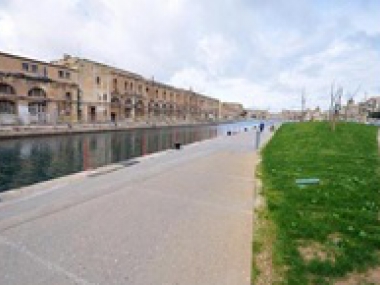Transit Oriented Development: planning for greater accessibility and mobility
Edited on
23 August 2017This article evaluates the impact of capital investment in two major projects promoting Transit Oriented Development (TOD) in the Harbour area Malta. These two projects were part-financed by the European Union through European Regional Development Fund (ERDF) for the 2007-2014 programme. The projects are a “Stronger Cottonera Communities - The citizens right to accessibility and mobility” and a “Vertical Connection - Better accessibility through innovative and cleaner transport”. They were both well placed with the objectives of Priority Axis 6 “Urban Regeneration and Improving the Quality of Life”. Revisiting the projects 10 years after inception throws light on TOD as a planning and transit tool; have these projects truly reached the targets set?

Introducing the two project: Cottonera Waterfront Project
In August 2015 the Planning Authority gave the go ahead for locating the American University of Malta project at Cottonera which would see the adaptive re-use of the British Buildings at the Dock No.1 and the complete regeneration of the waterfront project for Cottonera. This was one of the final projects which secured the completion of the “Stronger Cottonera Communities - The citizens right to accessibility and mobility” planning brief and project with an investment of €8,610,410. The purpose of this project was to launch an integrated urban regeneration project for Cottonera. The interventions include: enhanced transit areas, the development of the public realm through embellishment and the upgrading of social conditions through housing programmes. These projects were directed at strengthening neighbourhoods in the locality and install sustainable regeneration through better accessibility and mobility.
The location of the American University of Malta in 2015 comes as wise political and planning decision in spurring further regeneration through adaptive re-use and diversified agents of change:
1. The full embellishment of the Dock Number 1 nodes extending from Triq ix-xatt to Triq San Pawl. It targets the urban areas in the immediate surroundings to increase the permeability of the project fostering economic and social spin off as a result of physical regeneration.
2. Bormla Local Council has earmarked the site which is located in St.John's Bastion just off St.Nicholas Street and in front of a residential areas for upgrading. The project includes the installation of new lighting systems, fixing of benches and new paving.
3. The proposed project by Agenzija Support is the embellishment of the surrounding area outside Dar Bormla which is one of the residences managed by the agency. The outside area is being redesigned in this new proposal to cater for persons with disabilities and will restructure current parking spaces.”
Introducing the two project: A Vertical Connection
The success of the project was catalysed by the Valletta Vertical Connection Project on the opposite side of the Grand Harbour. The scope of the project was to provide greater access between Valletta's waterfront and the heart of the City through a vertical link. This new project would sustain the projects already underway and encourage further public and private investment in the area. It would also sustain ancillary operational transit systems and enhance the urban regeneration more sustainable. Moreover it would make Valletta a more attractive City for living and enhance the quality of life of the existing local and working community.
The project was unfortunately exported and reduced from the original Planning and Design Brief. Originally it was designed as a park and ride with a diagonal lift with attenuated visual impact. The political and planning decision at the time was to remove the park and ride element and go for a vertical “off-the-shelf” system with greater visual impact and reducing significantly transit points. The other element which would have made the project more viable was the park and ride element which was designed with a landscaping scheme in the Valletta Landfront ditch. The current Government has reversed the decision of the park and ride. The new Grand Harbour Regeneration Project injected funds in the development of the park and ride as part of the regeneration masterplan for the Valletta Entrance instead. The Vertical Connection project was designed to encourage a modal shift towards non-car modes when commuting to Valletta.
Positive results for TOD indicators
The two projects with recent interventions following the original planning briefs have proved in the medium term that transit oriented development has truly driven change. The current statistics show a significant change in mobility and accessibility and also positive impact on the urban environment. Some of the project results against their specific indicators are:
- A Modal shift from doubling the lift and ferry use as well as eco-busses
- Increased capacities for Park+Ride facilities
- A better traffic flow by redesigned waterfront and adjacent streets with shared space and increased walkability
- Better air quality through reduced congestion
- Rehabilitation of heritage e.g. by regeneration and re-use of the docks for the American University Malta
- Regenerated social housing blocks and neighbourhoods
Conclusion
As forecasted in 2007 “the implementation of TOD and gauging its success on micro-environments with micro-economies reflects the flexible nature of this planning tool. The effect of TOD on small communities and neighbourhoods measures its possibilities applied strategically at all levels of city fabric and texture. The Maltese cases point towards the possible adaptation of TOD in diverse cities and its encouraging results vis-à-vis sustainability, ‘smart growth’ and the promotion of green cities.” The ERDF programme and funds have made possible the capital investment to initiate this process and spur greater mobility and accessibility.
Please also find below our PDF document for translation of the article
Submitted by Olaf Lewald on
